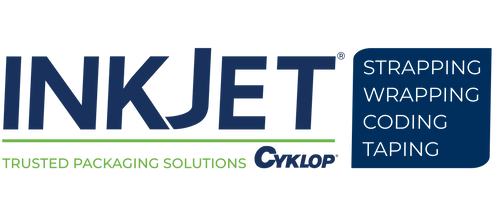Improving Aircraft Component Traceability With Quality Marking Hardware
Aircraft/aerospace manufacturing is a complex industry filled with stringent rules, traceability standards, and marking guidelines—and for good reason. After all, the components used to make aircraft vehicles must be produced in very particular ways to ensure proper operation. From propeller planes and helicopters to military fighter jets, air vehicles are complicated machines that can quickly become unsafe if a single part fails.
For that reason, traceability is taken extremely seriously in the aviation field. Aircraft engineers meticulously account for every detail when designing aircraft components. Materials, in particular, are important as engineers choose specific metals and plastics to ensure part success and longevity. For instance, even if a titanium component and steel component look identical, the difference in material makeup will greatly affect:
- Component strength
- Performance
- Deterioration rate
To ensure that every part operates as intended, aircraft manufacturers trace components all the way back to their material sources. With this level of front-to-back traceability, those in the aviation industry can effectively perform quality assurance by researching the origins of every single part used to construct an aircraft.
In this article, we take a look at some of the important aspects of aircraft component traceability, including:
- The basic requirements of contemporary marking standards
- The different machines used to mark aircraft parts
- How part manufacturers can more effectively mark their components to comply with industry standards
Common Elements Found in Today’s Aircraft Traceability
First, it’s important to note that, unlike the pharmaceutical industry or certain food processing fields, there are no federal laws concerning aircraft traceability. Instead, companies like Boeing maintain their own strict traceability specifications which they compel all their part suppliers to follow under threat of contract violation.
While traceability requirements naturally vary from company to company, they are informed by international organizations like SAE International which establish part marking standards in the aviation industry. For example, SAE AS9132 from SAE International lays out the basic technical requirements of all 2D data matrices placed on aircraft components.
To comply with SAE AS9132, data matrices must be applied with:
- A significant degree of code contrast, to ensure machine-readability
- Ample surrounding white space (i.e., a wide quiet zone), to boost visibility
- Ideal cell fill, dot center offset, and dot ovality, for proper scanning
- Minimum angle distortion, to prevent scanning problems
Similar to SAE AS9132’s directions on data matrices, company-specific marking guidelines touch on everything from lot code placement and size dimensions to required ink choice and minimum contrast. Moreover, for many parts, these codes cannot be placed in a manner that alters the part’s surface in a significant way. If these codes aren’t up to code, the part itself will be rejected as a non-conforming component.
Fortunately, there are a number of coding technologies available today that excel at meeting the direct part marking standards set by aviation companies.
How the Latest Part Marking Machines Improve Aircraft Component Traceability
Aircraft component compliance hinges on a few factors. Some of the most important considerations include:
- Codes must be able to withstand harsh conditions to maintain long-term readability.
- Barcodes and data matrices must have a high contrast level to remain machine-scannable.
- For many components, surface properties cannot be altered as a result of the marking process.
To meet these requirements, aircraft component manufacturers generally utilize two types of marking machines: continuous inkjet printers and laser marking systems.
Two high-speed non-contact marking machines, CIJ printers and laser marking systems are both valued for their long-lasting codes, compatibility with curved surfaces, and ability to operate uninterrupted for extended periods of time. Further, both options are compatible with the most common aircraft component materials, including:
- Aluminum
- Titanium
- Iron
- Steel
- Copper
- Glass
- Plastic
However, CIJ printers and laser systems are not always ideal for the same applications. In the chart below, we compare some of the most important qualities of these two different aircraft part marking options:
|
|
|
|
|
|
|
|
|
|
|
|
|
|
|
|
|
|
|
|
Need To Comply With Aircraft Component Traceability Standards? InkJet, Inc. Is Here To Help
There are few industries that take traceability more seriously than the aviation field. Fortunately, code compliance isn’t hard to achieve when you have the right marking equipment for the task.
At InkJet, Inc., we have been helping companies of all industries comply with marking guidelines for over 30 years, including companies involved in the aviation field. With our expertise, diverse marking hardware, and specialty inks, we can help you find the perfect marking solution for your operation. Call today to learn more.
For help complying with aircraft component traceability standards, contact us online today or call 1(800) 280-3245.



